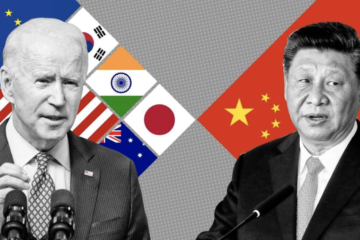Behind what is often nicely wrapped up as the idea of wedding gifts believed to bring families closer, is an age-old tradition that feeds into a patriarchal system, with detrimental effects on families, individuals and the community as a whole.
Though it may seem outdated, the practice of dowry is still commonly practiced in countries throughout South Asia. As is the case with many local traditions and practices, its underlying causes are often misunderstood, particularly by those who are not part of the same culture or society. This often makes it harder for the international community to find effective solutions to this problem since it is harder for external actors to grasp the mindset at its origins.
A dowry is the property and money a bride brings with her to her husband’s house at the time of marriage. The tradition of dowry, the use of which was initially left to the discretion of individual families, has now become an inevitable source of social pressure. Today, dowries are seen as being directly linked to the brides’ estimation and treatment by her husband, forcing their families to ensure that a substantial amount of dowry is provided. Arguably, the custom of dowry is one the largest obstacles to confronting India on her road to social and economic justice.
India, however, is not the only country having these traditional customs standing in the way of her progress. Other countries in the region, like Pakistan and Bangladesh, have faced similar obstacles in their social and economic growth, despite the existence of legislation against such practices.
Furthermore, it is not just one social or economic class that bears the brunt of dowries. Across India, Pakistan, and Bangladesh, in fact, families with varying statuses in society face the effects of having to conform to this tradition.
In dominantly patriarchal societies, where marriage is seen as a crucial part of a woman’s life, the amount of dowry a family must give to a bride is often directly linked to the probability of getting a suitable proposal. Thus, the increasing pressure on parents having to save up for dowries has caused many families to see daughters as an economic burden. Between 2011 and 2015, India recorded over 40,000 dowry-related deaths, which are over 10 times more than the combined fatalities of the Kashmir conflict, the Naxalite rebellion, and insurgencies in Northeast India during the same period.
Not all girls meet with the same fate, yet even those who escape from it are forced to give up many other things. When financial pressure forces them to choose, families often forgo spending on daughters’ education and save up the money for their dowries instead, depriving them of a basic right while feeding at the same time into the very system that gives men an upper hand. Furthermore, in an effort to reduce dowry prices, families often end up perpetuating the problem of child marriages, which still plagues the region. The younger a girl, the lower her dowry price – often seen by families as a reason to marry off their daughters at young ages.
The tradition of dowry not only affects the girls above mentioned but their families and communities too. Many families feel forced to take loans to fulfil the cost of their daughter’s dowries, and often these are loans they may never be able to repay. Struggling with repaying the debts for dowries, instead, creates a vicious cycle in which poor families can hardly improve their financial situation. Parents also often cut down on daily expenses to fulfil dowry costs, which means that families have to bear with a much lower standard of living than they would have otherwise.
The existence of dowry can also be attributed to another economic reason, namely the differential between what men and women gain from marriage. The benefits of marriage for women in South Asia, in fact, tend to be greater than those for men and dowries are seen as a way to make up that difference.
Still, the predominance of this practice in the region is not caused by a lack of legislation. The political outcry against dowry payments in India started decades ago leading to the Dowry Prohibition Act 1961. Within a few years, both Pakistan and Bangladesh followed suit. The Pakistani parliament established a law in 1976 in an attempt to reduce excessive marriage expenditures and Bangladesh’s Dowry Prohibition Act of 1980 made dowry payments a punishable offence. Later on, these laws were developed further and the Pakistan Law Commission reviewed dowry legislation in 1993 and added a sub-clause that prohibited grooms from demanding dowry.
Despite the existence of laws to counter the practice of dowry payments, however, it is obvious that little has changed in its practice. The reasons for this can be both a lack of enforcement of the law as well as a lack of understanding of the long-term causes and the reason why this practice started.
It is important to understand that unless this problem is addressed at its root, little change can be achieved. More and more voices are being raised against this practice, but in many cases, there is little the family of the bride can do. It is a movement that needs to spread across class and social status to truly purge society of this problem. Only when the problem is seen in its context and understood as a local phenomenon, can it be addressed and solved effectively.


